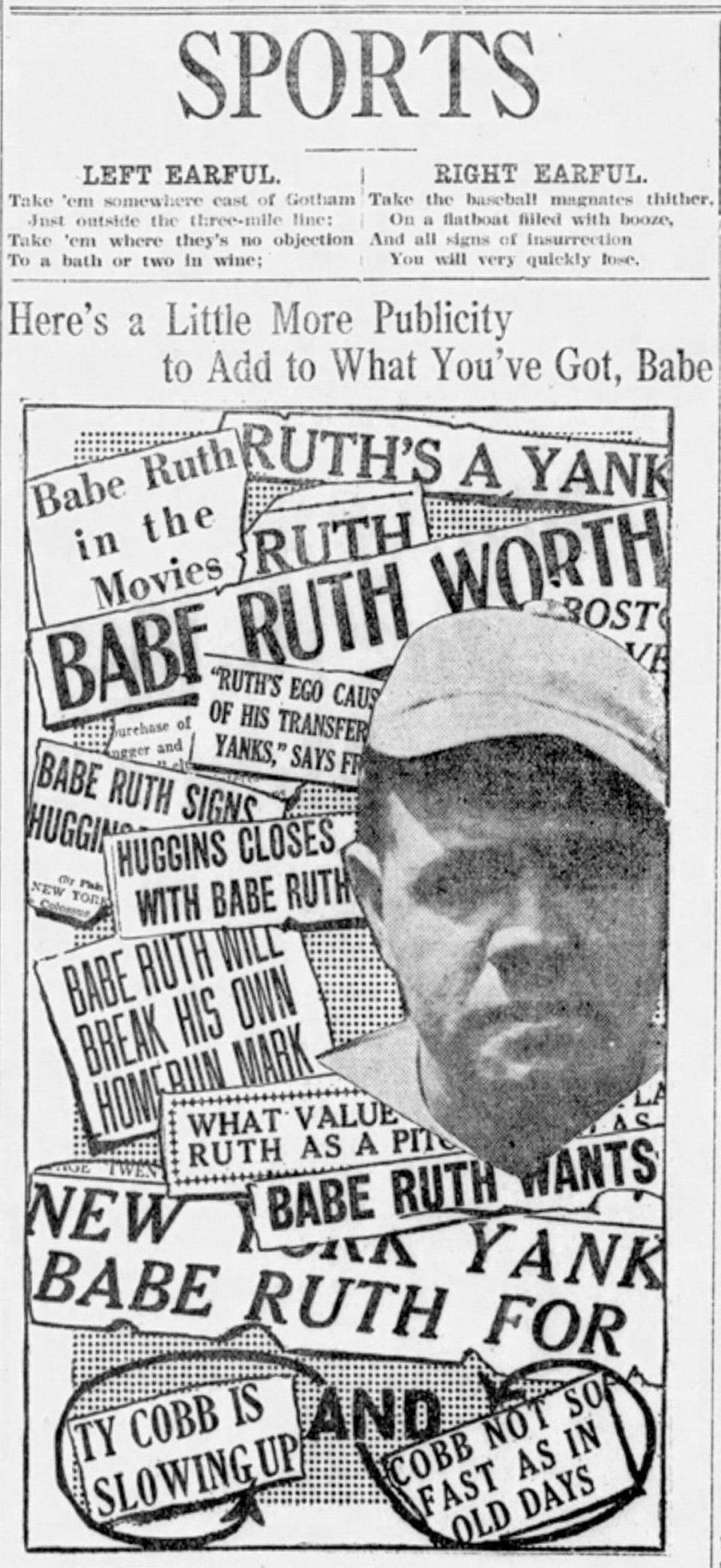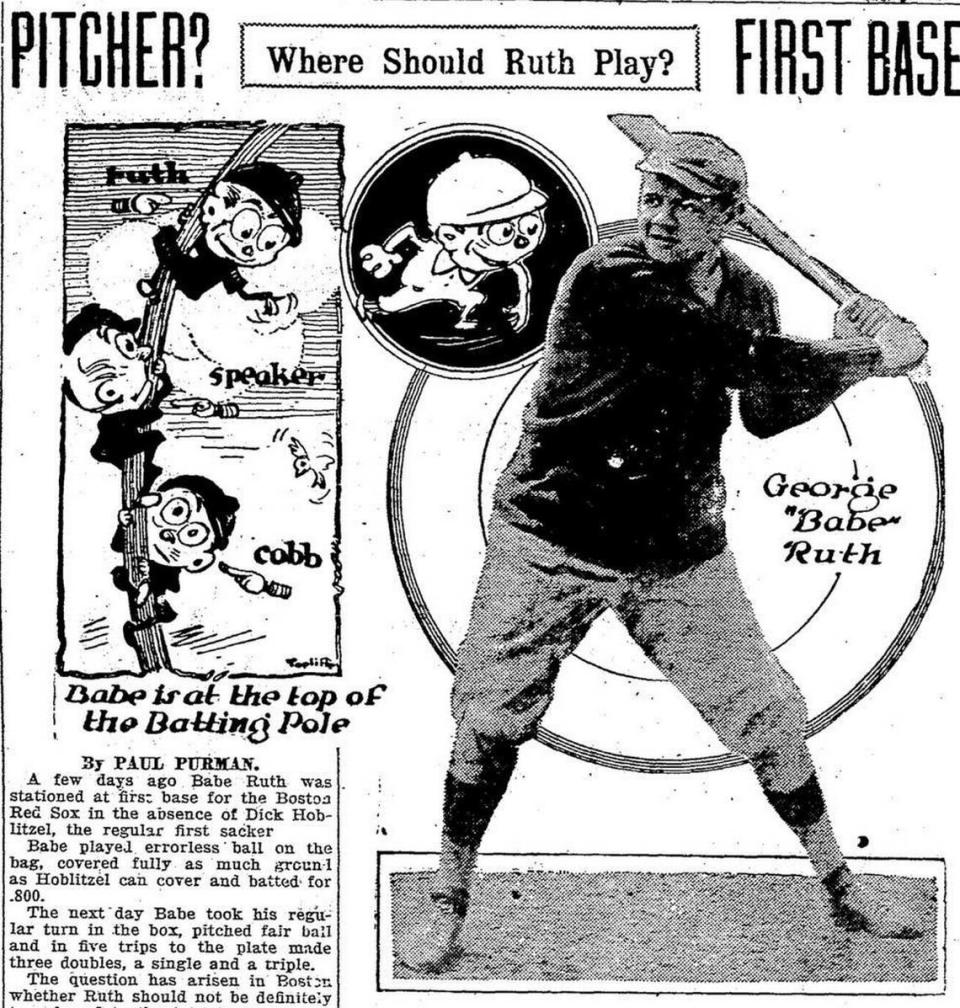Legendary slugger Babe Ruth paved the way for future baseball superstars. Here’s how
- Oops!Something went wrong.Please try again later.
- Oops!Something went wrong.Please try again later.
Professional baseball player Shohei Ohtani is doing something that hasn’t been done since the era of Babe Ruth: hit and pitch at an elite major league level.
Ruth smoked, drank and caroused in legendary fashion while leading the Boston Red Sox and the New York Yankees to a total of seven World Series championship wins.
Ruth’s cigar smoking likely contributed to the throat cancer that felled the then-retired slugger in 1946 at the age of 53.
In contrast, Ohtani, a pitcher, designated hitter and outfielder for the Los Angeles Angels, had the advantage of growing up in an era of good nutrition, fitness practices and training.
While being a designated hitter and removing pitchers with high pitch counts help Ohtani reduce wear and tear over the course of a long season, he also has to pitch against an extra designated hitter when he is on the mound.
To thrive in such an environment is impressive — and something to ponder as we head into Major League Baseball’s All-Star Week.

How Babe Ruth became a professional baseball superstar
As a child, Ruth was all but abandoned by his family and enrolled at a Catholic boarding school in Baltimore. Baseball gave him a focus and a ticket out of poverty, as well as a way to satisfy his seemingly boundless appetites.
In the early 20th century, St. Louis was as far west as the 16 MLB teams would travel to play for a regular season game.
Out on the West Coast, only the biggest baseball stars got mentioned on the pages of the San Luis Obispo Daily Telegram.
Ruth first appears in the newspaper in June 24, 1916.
At the time, Ruth was 20 years old and had won 18 games as a Boston Red Sox pitcher. He got less than 100 at bats that year but hit for a .315 average with four home runs.
Wally Pipp lead the league that year with 12 home runs.
A column titled “News Sport Notes” said “Babe Ruth of the Red Sox has a wicked way of feeding baseballs to the right field bleacherites. Wonder if he knows those pills cost $1.25 per.”
That writer would be shocked with today’s extravagant practice of replacing the ball every time it gets a scuff.

Though Ruth started his career as an ace pitcher, hitting would bring him lasting fame as he moved to the New York Yankees and even bigger fame.
Baseball would desperately need a hero and excitement after the 1919 Black Sox betting scandal tarnished the game.
In the 1920s, the owners wanted a more exciting brand of baseball and tinkered with the rules.
After the death of a batter hit by a pitch, doctoring the baseball with foreign substances was banned and clean bright baseballs were expected to be in play. The baseball was wound tighter and more lively, and the game balance shifted from the slap hitter and pitcher to the slugger.
Ruth’s ability to generate headlines was the subject of a syndicated feature story published in the Telegram on Jan. 15, 1920, the doldrums of the off season.
The book “Big Fella” by Jane Leavy describes how Ruth’s partnership with business manager Christy Walsh enabled the slugger to invent the role of modern-day MLB superstar. Ruth made as much money in the off season via movies, endorsements and barnstorming games as he did from his day job in baseball.
Ruth and Lou Gehrig played against a local Japanese-American all-star team in Fresno on one of their off-season barnstorm tours.
https://youtu.be/OcnR4Nn_cEY
Ruth was fortunate that Walsh was a talented manager who convinced the spendthrift, fast-living MLB star to put away some money for his life after baseball.
At one point during the Great Depression, Ruth was making more than President Herbert Hoover.
When challenged by sports writers, Ruth was said to have replied:
“What has Hoover got to do with this? Anyway, I had a better year than he did.”

